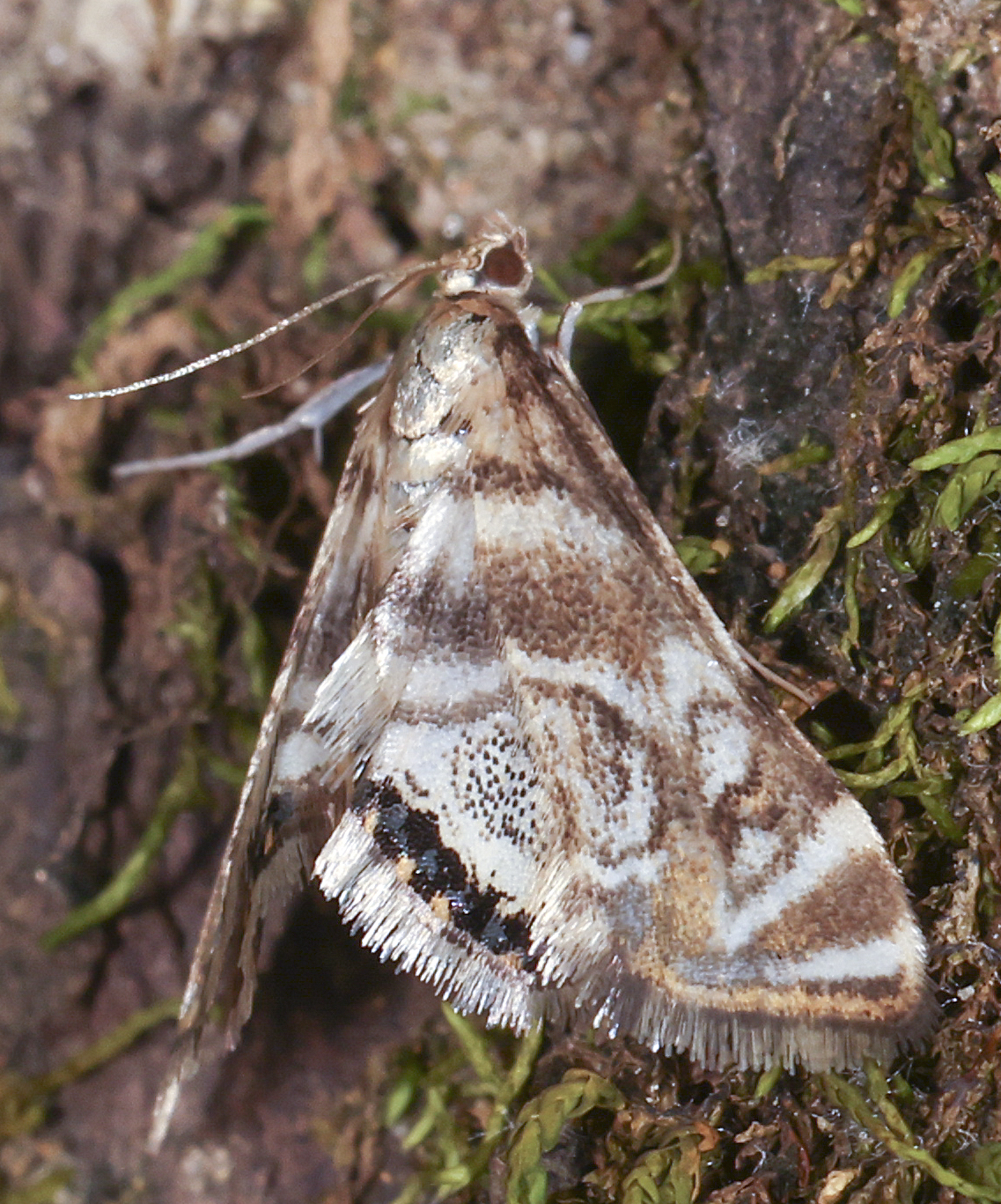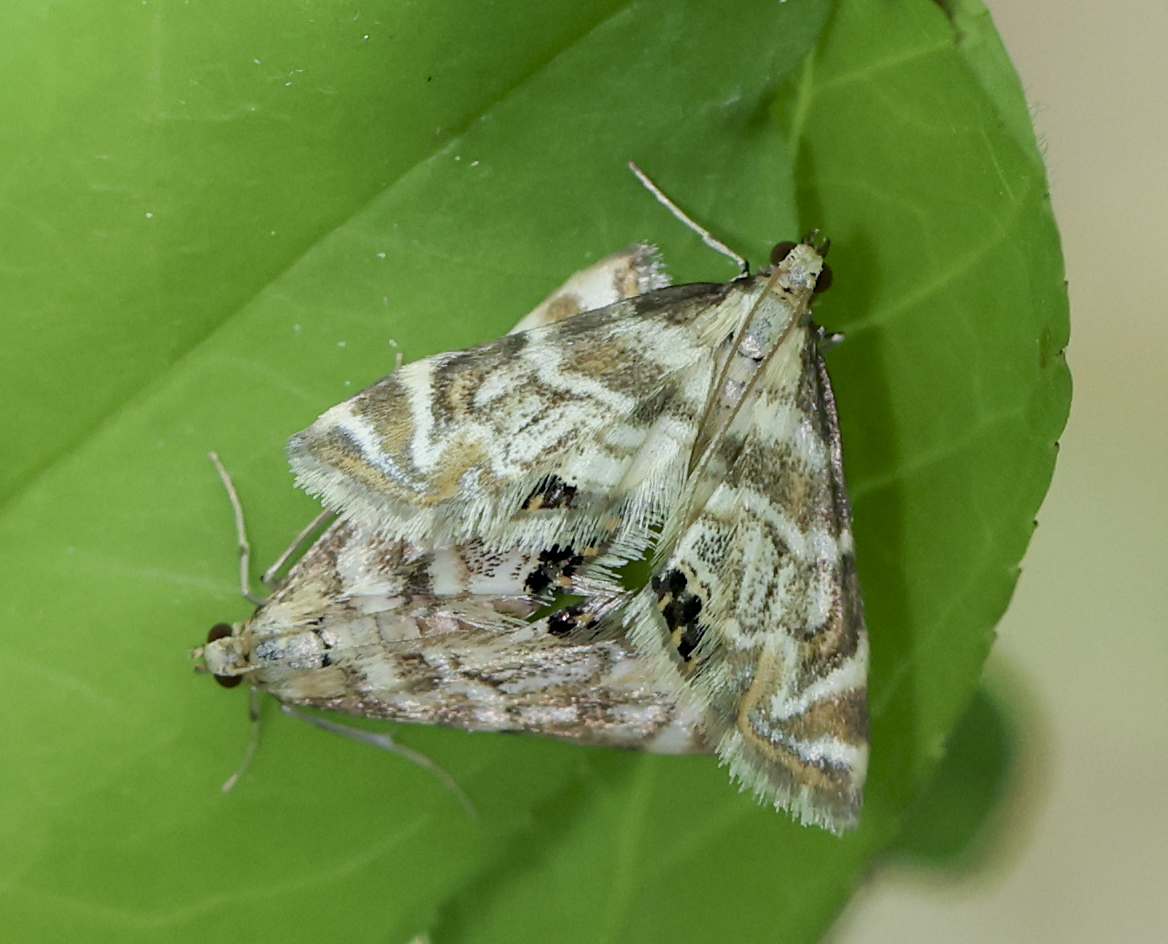Haw River Moth Irruption!
 The other day, John Petranka and I went to investigate an irruption of moths along the Haw River in Alamance County. We were following a tip that great numbers of Petrophila moths had recently been observed along the banks of the river. What we found was unlike anything I have ever seen. Moths in such numbers as to defy estimation - hundreds of thousands? millions? As far as I walked downstream, they could be found in great swarming clouds. And those in the air were only a fraction of the total - most were resting on vegetation (and every other surface). I was glad that John was there to witness (and document) the event, or I might have doubted my own experience. I made a short video on my phone which gives only a hint of what it was like.
The other day, John Petranka and I went to investigate an irruption of moths along the Haw River in Alamance County. We were following a tip that great numbers of Petrophila moths had recently been observed along the banks of the river. What we found was unlike anything I have ever seen. Moths in such numbers as to defy estimation - hundreds of thousands? millions? As far as I walked downstream, they could be found in great swarming clouds. And those in the air were only a fraction of the total - most were resting on vegetation (and every other surface). I was glad that John was there to witness (and document) the event, or I might have doubted my own experience. I made a short video on my phone which gives only a hint of what it was like.
 Petrophila is a tricky genus, and we still aren't entirely sure what species we were observing. We suspect that there may be a species complex in the Piedmont, including at least one undescribed species. For this reason, Bo Sullivan has long wanted to get his hands (and dissecting tools) on some of our local Petrophila, so we were there in part to collect specimens for him. It did not prove difficult. I started out using a net, but found an easier approach - just stand still and collect the moths as they landed on me. I ended up collecting a few dozen, which seemed like enough considering that John had already collected a large number himself. Now we just have to get them to Bo for confirmation. Based on John's photographs, Jim Petranka thinks that all signs are pointing to the Canadian Petrophila (P. canadensis), a species that has previously been confirmed from the mountains. Last summer, I observed a similar irruption of Petrophila further south on the Haw River in Pittsboro, though on a far lesser scale. As far as I can tell, it was the same species, but I will probably try to go back this year and collect some to make sure.
Petrophila is a tricky genus, and we still aren't entirely sure what species we were observing. We suspect that there may be a species complex in the Piedmont, including at least one undescribed species. For this reason, Bo Sullivan has long wanted to get his hands (and dissecting tools) on some of our local Petrophila, so we were there in part to collect specimens for him. It did not prove difficult. I started out using a net, but found an easier approach - just stand still and collect the moths as they landed on me. I ended up collecting a few dozen, which seemed like enough considering that John had already collected a large number himself. Now we just have to get them to Bo for confirmation. Based on John's photographs, Jim Petranka thinks that all signs are pointing to the Canadian Petrophila (P. canadensis), a species that has previously been confirmed from the mountains. Last summer, I observed a similar irruption of Petrophila further south on the Haw River in Pittsboro, though on a far lesser scale. As far as I can tell, it was the same species, but I will probably try to go back this year and collect some to make sure.
 Petrophila are especially interesting moths for a couple reasons. For one, the genus has aquatic larvae that are believed to feed on algae. As shown in this BugGuide image, they look more like some aquatic fly larva than anything I would associate with a caterpillar. For another thing, the adults are believed to be jumping spider mimics. The position of the eye spots on their wings make for a convincing approximation of a jumping spider's eyes. And they don't seem to be alone in mimicking jumping spiders. A somewhat similar-looking but unrelated moth, the Peacock Brenthia (Brenthia pavonacella) adds to the effect by imitating the jerky movements of a jumping spider, as shown in this video.
Petrophila are especially interesting moths for a couple reasons. For one, the genus has aquatic larvae that are believed to feed on algae. As shown in this BugGuide image, they look more like some aquatic fly larva than anything I would associate with a caterpillar. For another thing, the adults are believed to be jumping spider mimics. The position of the eye spots on their wings make for a convincing approximation of a jumping spider's eyes. And they don't seem to be alone in mimicking jumping spiders. A somewhat similar-looking but unrelated moth, the Peacock Brenthia (Brenthia pavonacella) adds to the effect by imitating the jerky movements of a jumping spider, as shown in this video.